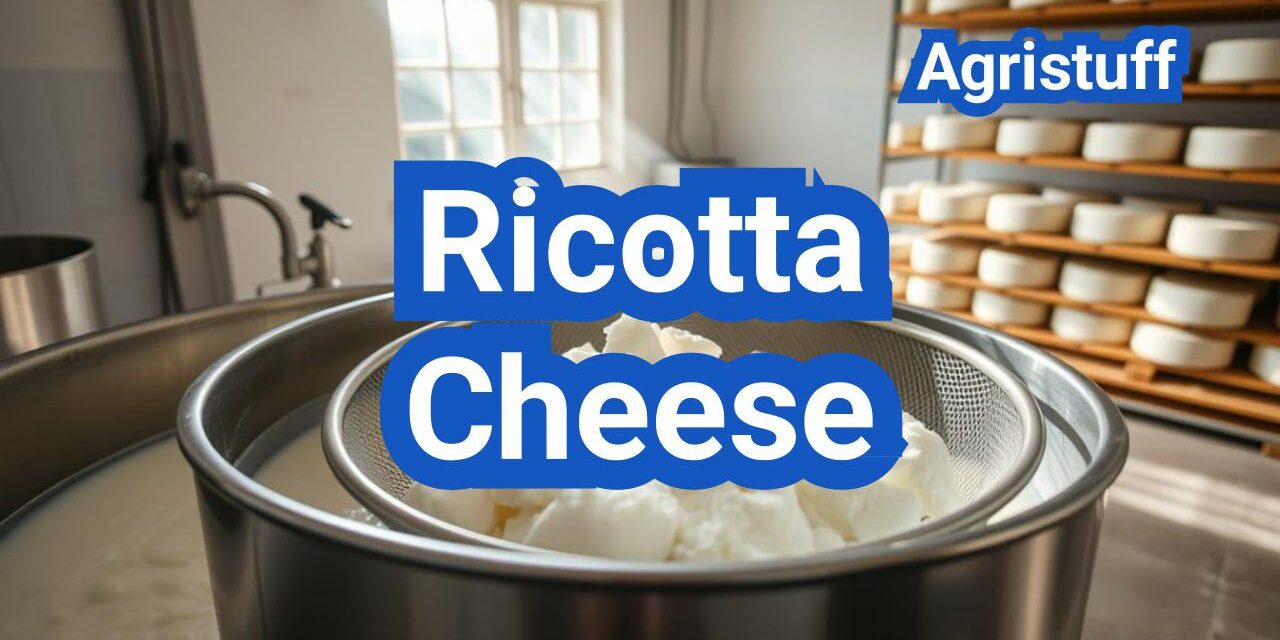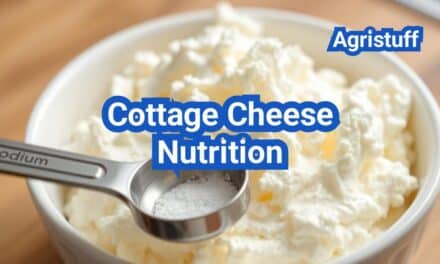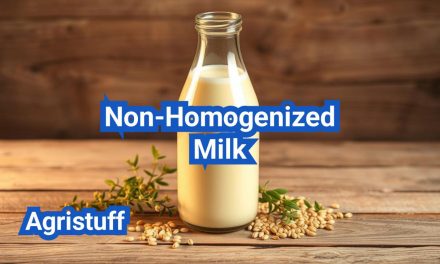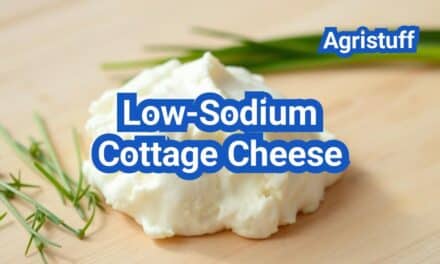Ricotta is an Italian whey cheese made from the whey of sheep, cow, goat, or Italian water buffalo milk. Its history dates back to the Bronze Age, and it has since become a staple in Italian cuisine.
The significance of this whey cheese lies in its versatility and wide range of applications in various recipes, from lasagna to cannoli fillings. Different types of ricotta are used in different dishes, showcasing its adaptability.
Understanding the history, types, and uses of ricotta is essential for appreciating its role in Italian cooking.
Key Takeaways
- Ricotta is a type of whey cheese originating from Italy.
- It has a rich history dating back to the Bronze Age.
- Ricotta is used in a variety of Italian dishes.
- Different types of ricotta are suited for different recipes.
- Ricotta’s versatility makes it a staple in Italian cuisine.
The Origins and History of Ricotta Cheese
With roots tracing back to the Bronze Age, ricotta cheese has evolved significantly over time. The history of ricotta is deeply intertwined with the culinary practices of the Mediterranean region, particularly in Italy.
Ancient Beginnings in the Mediterranean
Ricotta production dates back to the Bronze Age in the Italian peninsula, a period marked by significant cultural and agricultural developments. The cheese was initially produced as a way to utilize the whey leftover from cheese production, a practice that showcased the resourcefulness of ancient Mediterranean communities.
The process of creating ricotta involved heating the whey to precipitate the proteins, resulting in a soft, creamy cheese. This method, though simple, required a deep understanding of dairy processing and the properties of whey.
Evolution Through Italian Culinary Tradition
As Italian cuisine evolved, so did the role of ricotta within it. Ricotta became a staple in Italian cooking, used in a variety of dishes ranging from pasta fillings to desserts like cannoli. Its versatility and mild flavor made it a favorite among chefs and home cooks alike.
The traditional production methods were refined over centuries, with ricotta becoming an integral part of Italian culinary identity. Regional variations emerged, reflecting local tastes and preferences.
| Region | Traditional Ricotta Use | Notable Dishes |
|---|---|---|
| Sicily | Desserts and pastries | Cannoli, cassata |
| Tuscany | Pasta fillings and savory dishes | Ravioli, ricotta and spinach tart |
| Campania | Desserts and snacks | Pastiera, ricotta fritters |
Modern Global Popularity
In recent years, ricotta has gained popularity worldwide, thanks in part to the globalization of food trends and the increasing interest in Italian cuisine. Its use has expanded beyond traditional Italian recipes, with chefs experimenting with ricotta in various culinary contexts.
The global appeal of ricotta can be attributed to its creamy texture and mild flavor, making it a versatile ingredient in both sweet and savory dishes. As a result, ricotta has become a staple in many professional kitchens and home pantries around the world.
What Is Ricotta Cheese? Understanding the Basics

At its core, ricotta cheese is a dairy product made from the whey leftover after cheese production. This characteristic defines its fundamental nature and distinguishes it from other types of cheese.
Definition and Fundamental Characteristics
Ricotta cheese is produced by coagulating the proteins present in whey, which is a by-product of cheese making. The coagulation process typically involves the addition of acid or heat, causing the proteins to denature and form curds. The resulting cheese is soft, creamy, and has a mild flavor, making it versatile for various culinary applications.
The production of ricotta involves a straightforward process, but the quality of the final product depends on factors like the freshness of the whey and the precision in controlling temperature and acidity during coagulation.
Traditional vs Commercial Production Methods
Traditionally, ricotta cheese is made using whey from other cheese productions, such as mozzarella or parmesan. The whey is heated, and an acid like vinegar or lemon juice is added to coagulate the proteins. This method is still practiced in artisanal cheese making and is valued for producing a rich, authentic flavor.
Commercial ricotta production, on the other hand, often uses whole milk or a mixture of milk and whey. This method allows for a more consistent product and higher yield. The use of pasteurization and standardized acidity levels helps in achieving uniformity across batches.
Ricotta’s Significance in Italian Cuisine
Ricotta cheese plays a pivotal role in Italian cuisine, featuring in both savory and sweet dishes. It is a key ingredient in pasta fillings, such as in cannoli and ravioli, and is also used in pizzas and lasagnas. The mild flavor and creamy texture of ricotta make it an ideal component for a wide range of recipes.
In Italian cooking, ricotta is valued not just for its taste but also for its versatility. It can be used fresh or aged, and its mildness provides a perfect base for various flavorings and seasonings.
Nutritional Profile of Ricotta Cheese
Ricotta cheese is a nutrient-rich dairy product that offers a unique blend of macronutrients and micronutrients. It is known for containing less salt and fat compared to most other cheeses, making it a popular choice for those looking for a healthier dairy option.
Macronutrient Breakdown
Ricotta cheese is primarily composed of water, proteins, and fats. A typical serving of ricotta cheese contains a significant amount of protein, which is essential for muscle repair and growth. The fat content can vary depending on whether it’s made from whole milk or part-skim milk. Whole milk ricotta tends to have a higher fat content compared to part-skim ricotta.
Vitamins and Minerals Content
Ricotta cheese is a good source of various vitamins and minerals, including calcium, phosphorus, and vitamin B12. These nutrients are crucial for bone health, energy production, and nerve function. The presence of these vitamins and minerals adds to the nutritional value of ricotta cheese, making it a beneficial inclusion in a balanced diet.
Health Benefits and Considerations
The nutritional profile of ricotta cheese contributes to several health benefits. Its high protein content can help with satiety and muscle maintenance. Additionally, the calcium in ricotta cheese supports bone health. However, consumers should be mindful of the calorie and fat content, especially if consuming it in large quantities or opting for whole milk versions.
Comparing Different Ricotta Varieties (Whole Milk vs. Part-Skim)
When choosing ricotta cheese, consumers often decide between whole milk and part-skim varieties. Whole milk ricotta has a richer taste and higher fat content, while part-skim ricotta is lower in fat but still rich in protein and calcium. The choice between the two can depend on dietary needs and preferences. For those watching their fat intake, part-skim ricotta may be the preferable option.
Types of Ricotta Cheese Around the World

Exploring ricotta cheese reveals a multitude of types, each with unique characteristics. Ricotta, a versatile cheese, can be made from various milks, including cow, sheep, goat, or water buffalo milk, contributing to its diverse flavor profiles and textures.
Fresh Ricotta Varieties
Fresh ricotta is perhaps the most commonly known type, characterized by its soft, creamy texture and mild flavor. It’s often used in Italian desserts like cannoli and cheesecake, as well as in savory dishes such as lasagna. The production of fresh ricotta involves minimal processing, ensuring it retains its delicate taste and texture.
Aged Ricotta Varieties
Aged ricotta, on the other hand, undergoes a longer processing period, which concentrates its flavors and results in a denser texture. This type of ricotta is often used grated over pasta dishes or salads, adding a rich, nuanced flavor. Aged ricotta can be made from different types of milk, with sheep’s milk ricotta being particularly prized for its robust flavor.
Regional Italian Variations
Italy is home to numerous regional variations of ricotta, each with its own distinct characteristics. For instance, Ricotta Romana from Lazio is known for its creamy texture, while Ricotta Siciliana from Sicily is often made from sheep’s milk, giving it a unique flavor profile. These regional variations reflect the diverse culinary traditions across Italy, showcasing the versatility of ricotta in different contexts.
The diversity in ricotta types not only reflects the various production methods but also the different culinary uses of this cheese. Whether it’s used in baking, cooking, or as a topping, the right type of ricotta can elevate a dish significantly.
The Complete Ricotta Cheese Processing Steps
Ricotta cheese is made through a process that involves heating whey or milk to a high temperature, causing the proteins to coagulate and form curds. The art of ricotta cheese production lies in its processing steps, which can be tailored to achieve desired textures and flavors.
Traditional Whey-Based Method
The traditional method of making ricotta involves using the whey leftover from cheese production. This whey is heated to a temperature of around 180°F (82°C), causing the proteins to denature and form curds. The mixture is then cooled, and the curds are collected and strained.
Key steps in the traditional whey-based method include:
- Heating the whey to the appropriate temperature
- Maintaining the heat to allow curd formation
- Cooling and straining the curds
Whole Milk Method
In contrast to the traditional whey-based method, whole milk ricotta production involves using whole milk instead of whey. This method produces a richer and creamier ricotta cheese. The process involves adding an acid, such as vinegar or lemon juice, to the milk, which is then heated to induce curdling.
The whole milk method offers several advantages, including:
- A creamier texture due to the higher fat content
- A more straightforward process, as it eliminates the need for whey
- Potential for a milder flavor profile
Both methods result in a delicious and versatile cheese that can be used in a variety of dishes, from lasagna to cannoli.
The Science Behind Whey Cheese Processing
The production of ricotta cheese involves a fascinating scientific process that transforms whey into a delicious and versatile dairy product. This process is rooted in the principles of protein denaturation and curd formation, which are crucial for understanding how ricotta cheese is made.
Protein Denaturation Process Explained
Protein denaturation is a critical step in whey cheese processing. When whey is heated to near-boiling temperatures, the proteins undergo denaturation, unfolding from their native structures. This process exposes hydrophobic groups, leading to protein aggregation and the formation of a curd.
The denaturation of proteins is influenced by factors such as temperature, pH, and the presence of calcium ions. Understanding these factors is essential for controlling the texture and quality of the final product.
Role of Heat and Acidity in Curd Formation
Heat and acidity play pivotal roles in the curd formation process during ricotta cheese production. Heating the whey to high temperatures accelerates protein denaturation, while acidity helps to coagulate the proteins and form a distinct curd.
The combination of heat and acidity must be carefully balanced to achieve the desired texture and flavor. Too much heat can result in a tough or grainy texture, while insufficient acidity can lead to a weak or fragile curd.
Differences from Regular Cheese Production Methods
Whey cheese processing differs significantly from regular cheese production methods. Unlike traditional cheese making, which involves the coagulation of casein proteins, ricotta production focuses on the whey proteins. This difference requires distinct processing techniques, including the use of high temperatures and acidity control.
The unique characteristics of whey cheese processing contribute to the distinct flavor and texture of ricotta cheese, setting it apart from other types of cheese.
Essential Equipment for Ricotta Cheese Production

To produce ricotta cheese, manufacturers and home cooks alike need appropriate equipment tailored to their production scale. The type of equipment used can significantly affect the quality, efficiency, and cost of production.
Industrial Production Equipment
Industrial ricotta cheese production relies on advanced machinery designed for large-scale dairy processing. Key equipment includes:
- Pasteurizers: Essential for heating milk to a high temperature to kill bacteria, ensuring safety and quality.
- Coagulation Tanks: Large, temperature-controlled vessels where milk is mixed with acid or rennet to form curds.
- Centrifuges or Separators: Used to separate curds from whey efficiently.
- Cheese Molds or Forms: Shaping the ricotta into its desired form.
- Cooling and Packaging Machinery: For cooling the ricotta to a safe temperature and packaging it for distribution.
Traditional Artisanal Tools
Artisanal ricotta production, often found in small dairy farms or specialty cheese makers, uses more traditional tools:
- Large, Shallow Pans: For heating the milk or whey to the appropriate temperature.
- Long, Slotted Spoons or Skimmers: Used to gently break the curd and remove it from the whey.
- Cheesecloth or Butter Muslin: For draining excess whey and achieving the desired consistency.
- Wooden or Plastic Molds: To shape the ricotta.
Home Production Equipment Essentials
For those making ricotta at home, the equipment is more accessible and less expensive:
- Large Pot: Preferably stainless steel, for heating the milk or whey.
- Thermometer: To monitor the temperature accurately.
- Strainer or Colander Lined with Cheesecloth: For draining the whey.
- A Long Spoon or Spatula: For stirring and breaking the curd.
Regardless of the scale, having the right equipment is crucial for producing high-quality ricotta cheese. Each piece of equipment plays a vital role in the production process, from pasteurization and coagulation to shaping and packaging.
Step-by-Step Guide to Making Homemade Ricotta Cheese

With just a few simple steps, you can produce high-quality ricotta cheese in the comfort of your own kitchen. Making ricotta at home involves heating milk or whey and then straining it, a process that’s both straightforward and rewarding.
Ingredients and Equipment Preparation
To start, you’ll need a few basic ingredients and some simple equipment. For a traditional ricotta recipe, you’ll need:
- 1 quart of whole milk
- 1/2 cup of heavy cream
- 1/2 teaspoon of salt
- 1/4 teaspoon of vinegar or lemon juice
In terms of equipment, you’ll need a large pot, a thermometer, a strainer or colander lined with cheesecloth, and a bowl to catch the whey.
Detailed Production Process
The process of making ricotta cheese involves heating the milk mixture to a specific temperature and then allowing it to cool slightly before straining.
- Combine the milk, heavy cream, and salt in a large pot and heat it over medium heat, stirring occasionally, until the mixture reaches 180°F to 190°F.
- Remove the pot from the heat and stir in the vinegar or lemon juice. Let it sit for about 5 minutes, allowing the mixture to curdle.
- Line a strainer or colander with cheesecloth and place it over a bowl. Carefully pour the curds and whey into the cheesecloth.
- Let the mixture drain for about 10 to 20 minutes, depending on how dry you want your ricotta to be.
Troubleshooting Common Issues
Even with a simple recipe, issues can arise. Here are some common problems and their solutions:
| Issue | Solution |
|---|---|
| Ricotta too wet | Allow it to drain for a longer period. |
| Ricotta too dry | Reduce the draining time or add a bit more cream. |
| Ricotta lacks flavor | Add more salt or try using different types of milk or cream. |
Tips for Achieving Perfect Texture and Flavor
To achieve the perfect ricotta, it’s crucial to not overheat the milk mixture and to monitor the draining time closely. Experimenting with different milks and flavorings can also help you find your ideal ricotta.
“The key to a good ricotta is in the simplicity of its ingredients and the care taken during its preparation.”
A renowned cheesemaker
By following these steps and tips, you can create delicious homemade ricotta cheese that’s perfect for a variety of dishes, from lasagna to cannoli.
Ricotta Cheese vs. Cottage Cheese: Key Differences

Understanding the differences between ricotta cheese and cottage cheese is crucial for culinary applications. While both are dairy products, they have distinct characteristics that set them apart.
Production Method Differences
Ricotta cheese is typically made from whey, which is a byproduct of cheese production, although some ricotta is now made from whole milk. Cottage cheese, on the other hand, is made from curdled milk. The production process for ricotta involves heating the whey to a high temperature, causing the proteins to denature and form curds. Cottage cheese production involves culturing milk with bacteria, allowing it to curdle, and then cutting and cooking the curds.
Ricotta Production: Heating whey to denature proteins.
Cottage Cheese Production: Culturing milk, curdling, cutting, and cooking curds.
Texture and Flavor Comparison
Ricotta has a lighter, creamier texture compared to cottage cheese, which is often lumpier. The flavor of ricotta is generally milder and less salty than cottage cheese. Ricotta’s texture makes it ideal for dishes like lasagna and cannoli, while cottage cheese is often eaten on its own or used in salads.
Nutritional Profile Differences
Both ricotta and cottage cheese are good sources of protein, but they differ in their nutritional profiles. Ricotta tends to be higher in calories and fat, especially if it’s made from whole milk. Cottage cheese, particularly the low-fat version, is often lower in calories and fat.
| Nutrient | Ricotta Cheese (per 100g) | Cottage Cheese (per 100g) |
|---|---|---|
| Calories | 174 | 98 |
| Protein | 11g | 11g |
| Fat | 13g | 2g (low-fat) |
Best Culinary Applications for Each
Ricotta is commonly used in Italian dishes like lasagna, ravioli fillings, and cannoli. Cottage cheese is often eaten as is, used in salads, or as a topping for toast or fruit. While both can be used in similar dishes, their textures and flavors make them more suited to specific recipes.
- Ricotta: Lasagna, cannoli, ravioli fillings
- Cottage Cheese: Salads, toast topping, fruit topping
In conclusion, while ricotta and cottage cheese share some similarities, their differences in production, texture, flavor, and nutritional content make them unique and suited for different culinary applications.
Best Substitutes for Ricotta Cheese in Recipes

Whether you’re looking for a dairy-based or plant-based alternative, there are several substitutes for ricotta cheese that can work well in various recipes. The key is to find an ingredient that matches the texture and flavor profile you’re aiming for.
Dairy-Based Alternatives
For those who still want to stay within the dairy spectrum, there are several options that can replace ricotta cheese effectively.
- Cottage Cheese: One of the most popular substitutes, cottage cheese has a similar texture to ricotta and can be used in both sweet and savory dishes. It’s a great source of protein and can be blended to achieve a smoother consistency.
- Goat Cheese: Goat cheese offers a tangier flavor profile compared to ricotta. It’s ideal for recipes where you want to add a bit of zest. Softening it can make it more suitable for mixing into dishes.
- Mascarpone Cheese: Although richer and creamier, mascarpone can be used as a substitute in certain recipes, especially desserts. It adds a luxurious texture and flavor.
Plant-Based Alternatives
For vegan or dairy-free diets, plant-based alternatives can effectively replace ricotta cheese in recipes.
- Tofu: Blended silken tofu can mimic the creamy texture of ricotta. It’s a versatile option that works well in both savory and sweet dishes. You can season it to match the flavor requirements of your recipe.
- Cashew Cream: Soaking cashews and blending them with water creates a creamy texture that can be used as a ricotta substitute. It’s particularly good in desserts or when you need a rich, creamy element.
- Vegan Ricotta Cheese: Many brands now offer vegan ricotta cheese made from plant-based ingredients like nuts, seeds, or soy. These can be direct substitutes in most recipes.
When substituting ricotta cheese, it’s essential to consider the flavor and texture you want to achieve in your final dish. Experimenting with different alternatives can help you find the perfect match for your recipe.
Culinary Uses of Ricotta Cheese in Global Cuisine

The adaptability of ricotta cheese makes it a favorite among chefs and home cooks alike. Its mild flavor and creamy texture allow it to be used in a wide range of dishes, from savory meals to sweet desserts.
Savory Applications
Ricotta cheese is a versatile ingredient in savory dishes, adding richness and depth to various recipes. Some popular savory applications include:
- Lasagna and other pasta bakes
- Pizza toppings, especially when combined with vegetables or cured meats
- Stuffed shells and manicotti
- Dips and spreads for crackers or vegetables
In Italian cuisine, ricotta is often used as a filling for savory pastries and as a topping for pizzas. Its creamy texture makes it an excellent base for dips, and when mixed with herbs and spices, it becomes a delicious accompaniment to bread or crackers.
Sweet Applications
Ricotta cheese is perhaps most famous for its role in sweet desserts, particularly in Italian sweets. Some classic sweet applications include:
- Cannoli fillings
- Cheesecakes and ricotta cakes
- Tiramisu and other creamy desserts
- Pancakes and waffles toppings
The mild flavor of ricotta makes it an ideal base for sweet desserts, as it absorbs flavors well and adds a creamy texture. In cannoli, for example, ricotta is sweetened and mixed with chocolate chips or candied fruit, creating a delicious Sicilian treat.
In conclusion, ricotta cheese is a highly versatile ingredient that can be used in a variety of dishes, both savory and sweet. Its adaptability and mild flavor make it a staple in many cuisines around the world.
Second Cheese Whey (Scotta): Sustainable Uses and Applications

The production of ricotta cheese generates a significant by-product known as second cheese whey or scotta, which has various sustainable uses. As the dairy industry continues to grow, finding environmentally friendly and economically viable ways to utilize scotta has become increasingly important.
Traditional Applications in Rural Communities
In traditional rural settings, scotta has been used primarily as animal feed due to its nutritional content. It serves as a valuable resource for local farmers, providing a cost-effective feed supplement for livestock. Additionally, scotta has been utilized in traditional cooking, particularly in recipes that require a whey-based ingredient.
“The use of scotta in animal feed not only reduces waste but also provides a nutritious diet for animals,” according to dairy farming experts. This practice has been a staple in many rural communities where ricotta production is prevalent.
Modern Industrial and Commercial Uses
Beyond traditional uses, scotta is finding new applications in modern industries. It is being explored as a potential ingredient in the production of bioactive compounds, food additives, and even biofuels. The high lactose content in scotta makes it an attractive substrate for fermentation processes, opening up new avenues for its utilization.
- Production of bioactive compounds
- Use as food additives
- Potential source for biofuel production
Nutritional Value and Potential Health Benefits
Scotta retains many of the nutritional properties of whey, including proteins, minerals, and lactose. Its nutritional profile makes it a valuable ingredient in dietary supplements and functional foods. Research into the health benefits of scotta is ongoing, with potential applications in sports nutrition and wellness products.
Nutritional Highlights of Scotta:
| Nutrient | Content per 100g |
|---|---|
| Proteins | 0.8g |
| Lactose | 4.5g |
| Minerals | Varies |
In conclusion, second cheese whey or scotta is a versatile by-product of ricotta cheese production with a range of sustainable uses, from traditional animal feed to modern industrial applications. Its nutritional value and potential health benefits further enhance its utility, making it a valuable resource in various sectors.
Safety Concerns and Listeria Prevention in Ricotta Production

Ensuring the safety of ricotta cheese is crucial, particularly in preventing Listeria contamination. Ricotta, being a dairy product with high moisture content, is susceptible to microbiological risks if not handled and processed properly.
Potential Microbiological Risks
Microbiological risks in ricotta production primarily include contamination by pathogens such as Listeria monocytogenes, Salmonella, and E. coli. These pathogens can cause severe foodborne illnesses, making it imperative to implement stringent safety measures.
| Pathogen | Disease Caused | Prevention Measures |
|---|---|---|
| Listeria monocytogenes | Listeriosis | Pasteurization, proper handling |
| Salmonella | Salmonellosis | Cleanliness, temperature control |
| E. coli | E. coli infection | Hygiene practices, pasteurization |
Pasteurization Requirements and Standards
Pasteurization is a critical step in ensuring the safety of ricotta cheese. It involves heating the milk to a high temperature to kill harmful bacteria. The pasteurization process must meet specific standards to be effective.
Pasteurization Standards:
- Temperature: At least 161°F (72°C) for 15 seconds
- Alternative: 145°F (63°C) for 30 minutes
Safe Handling Practices for Producers and Consumers
Safe handling practices are essential for both producers and consumers to prevent contamination. Producers must maintain clean facilities and equipment, while consumers should store ricotta cheese properly and consume it within the recommended timeframe.
Recognizing Signs of Contamination and Spoilage
Consumers should be aware of the signs of contamination and spoilage, including off-odors, slimy texture, and mold growth. If ricotta cheese exhibits any of these signs, it should be discarded immediately.
Proper Storage and Maximizing Shelf Life of Ricotta
Proper storage is crucial for maintaining the quality and extending the shelf life of ricotta cheese. Whether you’re a producer, distributor, or consumer, understanding the best storage practices can make a significant difference in the product’s overall quality and safety.
Fresh Ricotta Storage Guidelines
Fresh ricotta is highly perishable and should be consumed within a few days of opening. To store fresh ricotta, keep it in its original container, tightly sealed, and refrigerated at a temperature below 40°F (4°C). If the ricotta is homemade or has been opened, transfer it to an airtight container to prevent contamination and exposure to air.
Aged Ricotta Storage Methods
Aged ricotta, having a lower moisture content than fresh ricotta, can be stored for longer periods. It should still be kept in the refrigerator, wrapped tightly in plastic wrap or aluminum foil, or placed in an airtight container. The colder the storage, the longer it will last, but it should ideally be consumed within a couple of weeks.
| Storage Method | Fresh Ricotta | Aged Ricotta |
|---|---|---|
| Refrigeration Temperature | Below 40°F (4°C) | Below 40°F (4°C) |
| Storage Container | Airtight container | Airtight container or wrapped tightly |
| Consumption Period | Within a few days | Up to 2 weeks |
Clear Signs of Spoilage to Watch For
Regardless of the type of ricotta, there are clear signs of spoilage to watch for. These include an off smell, slimy texture, or mold growth. If any of these signs are present, the ricotta should be discarded immediately to avoid foodborne illness.
Freezing Ricotta: Best Practices and Limitations
Freezing ricotta can be a viable option for extending its shelf life, but it comes with certain limitations. Fresh ricotta, when frozen, may undergo texture changes, becoming more crumbly or separated upon thawing. To freeze ricotta, place it in an airtight container or freezer bag, pressing out as much air as possible before sealing. Frozen ricotta is best used in cooked dishes where texture changes won’t be as noticeable.
By following these storage guidelines, you can enjoy your ricotta cheese for a longer period while maintaining its quality and safety.
Buying Guide: How to Select Quality Ricotta Cheese
When it comes to buying ricotta cheese, understanding what to look for is crucial to ensure you’re getting a high-quality product. Ricotta cheese is a staple in many Italian dishes, and its quality can significantly impact the final taste and texture of your culinary creations.
What to Look for in Store-Bought Ricotta
When selecting store-bought ricotta, it’s essential to check the ingredient list and nutritional information. Opt for ricotta with minimal ingredients and avoid products with unnecessary additives or preservatives. Fresh ricotta should have a clean, slightly sweet flavor and a smooth texture.
“The best ricotta cheese is made from high-quality milk and has a delicate flavor,” says cheese experts. Look for ricotta that is made from whole milk or a blend of whole and skim milk for the best flavor and texture.
Popular and Recommended Brands in the United States
Some popular brands of ricotta cheese in the United States include Galbani, BelGioioso, and Sorrento. These brands are known for their quality and consistency. When trying a new brand, check the packaging for any additives or preservatives.
- Galbani: Known for its traditional Italian cheeses, Galbani offers a high-quality ricotta.
- BelGioioso: This brand provides a rich and creamy ricotta perfect for various recipes.
- Sorrento: Sorrento’s ricotta is made with high-quality milk and has a smooth texture.
Understanding Labels and Ingredient Lists
Understanding the labels on ricotta cheese packaging can help you make an informed decision. Look for terms like “whole milk,” “low-fat,” or “non-dairy” to determine the type of ricotta that suits your needs. Be wary of products with long lists of preservatives and additives.
Specialty and Artisanal Options Worth Trying
For those looking to elevate their dishes, artisanal ricotta cheese can be a great option. Brands like Capriole and Monti della Gatta offer unique, handcrafted ricotta cheeses that can add a special touch to your recipes. These artisanal options may have a richer flavor and creamier texture than mass-produced ricotta.
By considering these factors and options, you can select a high-quality ricotta cheese that enhances your cooking and baking.
The Versatility and Enduring Appeal of Ricotta Cheese
Ricotta cheese has established itself as a staple in many cuisines, thanks to its versatility and mild flavor. From traditional Italian dishes to modern fusion recipes, ricotta’s adaptability has made it a favorite among chefs and home cooks alike.
The enduring appeal of ricotta lies in its numerous applications, ranging from savory dishes like lasagna and cannoli to sweet treats like cheesecakes and pancakes. Its creamy texture and subtle taste make it an ideal ingredient for various culinary creations.
As explored in the previous sections, ricotta cheese is not only a delight to the palate but also offers several nutritional benefits. With its rich protein content, vitamins, and minerals, ricotta can be a valuable addition to a balanced diet.
In conclusion, the ricotta cheese versatility and its enduring appeal are a testament to its timeless charm in the culinary world. Whether you’re a professional chef or an enthusiastic home cook, incorporating ricotta into your recipes can elevate your dishes and provide a delicious experience for those who savor them.
FAQ
What is ricotta cheese?
Ricotta cheese is a type of Italian cheese made from whey or milk, characterized by its soft, creamy texture and mild flavor.
What is the history of ricotta cheese?
Ricotta cheese has its origins in ancient Mediterranean cuisine, evolving through Italian culinary tradition to become a staple in Italian cooking.
What are the different types of ricotta cheese?
There are various types of ricotta cheese, including fresh ricotta, aged ricotta, and regional Italian variations, as well as different milk sources like sheep’s or goat’s milk.
How is ricotta cheese made?
Ricotta cheese is made through a process involving heating whey or milk, adding acid or rennet, and then separating the curds from the whey.
What is the difference between ricotta and cottage cheese?
Ricotta and cottage cheese differ in production methods, texture, flavor, and nutritional profiles, with ricotta being generally softer and creamier.
Can I make ricotta cheese at home?
Yes, you can make ricotta cheese at home using simple ingredients and equipment, following a step-by-step guide to achieve the desired texture and flavor.
What are the nutritional benefits of ricotta cheese?
Ricotta cheese is a good source of protein, calcium, and various vitamins and minerals, making it a nutritious addition to a balanced diet.
How should I store ricotta cheese?
Ricotta cheese should be stored in the refrigerator, kept airtight, and consumed within a few days of opening, or frozen for longer storage.
What are some common uses for ricotta cheese?
Ricotta cheese is versatile and can be used in various dishes, from lasagna and cannoli to cheesecakes and pasta fillings.
Can I substitute ricotta cheese with other cheeses?
Yes, you can substitute ricotta cheese with other cheeses like cottage cheese or cream cheese, or with plant-based alternatives in some recipes.
Is ricotta cheese safe to eat during pregnancy?
Ricotta cheese can be safe to eat during pregnancy if it’s made from pasteurized milk; always check the label or ask the manufacturer.
What is the difference between ricotta salata and regular ricotta?
Ricotta salata is a type of aged ricotta cheese, salted and often used grated or sliced, whereas regular ricotta is typically fresh and soft.
Can I use ricotta cheese in desserts?
Yes, ricotta cheese is often used in desserts like cheesecakes, cannoli, and tiramisu, adding a creamy texture and mild flavor.
How do I choose a good quality ricotta cheese?
When selecting ricotta cheese, look for products with minimal ingredients, no artificial additives, and a fresh, creamy texture.
Conclusion of: Ricotta Cheese
What is Ricotta cheese?
Ricotta cheese is a soft, fresh, high-moisture dairy product with a delicate, milky flavor and a fine, moist curd. Unlike firm, rennet-set varieties, Ricotta cheese is traditionally produced by heating acidified whey so that whey proteins coagulate into a tender curd that’s skimmed and drained, which explains the Italian name “ri-cotta” or “recooked.” This gentle process gives Ricotta cheese its characteristic lightness and versatility across savory and sweet dishes. Encyclopaedia Britannica — Ricotta
History and origin of Ricotta cheese
Centuries before industrial dairies, Italian cheesemakers learned to reclaim nutrition from leftover whey by re-heating and lightly acidifying it, yielding the fresh curd we now call Ricotta cheese. Historical language sources note the root “recocta” (“cooked again”), a practical description of the heat-coagulation step that defines Ricotta cheese and distinguishes it from curd-and-whey styles made directly from whole milk. Treccani — Vocabolario: “ricotta”
Protected names and authenticity
While many regions now produce Ricotta cheese, some Italian versions are protected by geographic designations that preserve local identity and methods. “Ricotta Romana” is one notable example: a PDO (DOP) product tied to specific sheep’s whey, territories, and controls overseen by its consortium, helping consumers identify authentic styles of Ricotta cheese rooted in place. Consorzio Ricotta Romana DOP — Official Page
Regulatory snapshot in the United States
In the U.S., producers of Ricotta cheese operate under broad dairy safety frameworks rather than a narrow federal “Standard of Identity” specific to ricotta. Plants typically comply with the Grade “A” Pasteurized Milk Ordinance (PMO) and modern preventive controls, which emphasize pasteurization, sanitation, employee training, and documentation to ensure Ricotta cheese is produced safely and consistently. FDA — Grade “A” Pasteurized Milk Ordinance (PMO)
Nutrition basics of Ricotta cheese
Typical whole-milk Ricotta cheese delivers around 170–190 kcal per 100 g with roughly 11 g protein, variable fat depending on milk or cream additions, and modest carbohydrates from residual lactose. Part-skim versions reduce fat while retaining protein, and labels list exact values so shoppers can choose Ricotta cheese that fits their dietary goals. USDA FoodData Central — Ricotta, whole milk
How Ricotta cheese is made (process overview)
Industrial and artisan methods share a common core: gently heat fresh whey (often from mozzarella or provolone), guide the acidity with fermentation or food-grade acids, and allow delicate curd particles to rise and gather. The curd is skimmed or ladled into perforated baskets to drain, lightly salted as desired, cooled, and rapidly chilled to protect quality and safety in Ricotta cheese. FAO — Dairy Processing: Whey Cheeses
Key variables: temperature, pH, and yield
To achieve consistent texture in Ricotta cheese, makers control heat (often near 88–92 °C / 190–198 °F), acidity (pH targeting for optimal flocculation), and gentle agitation. These factors govern curd particle size, moisture retention, and syneresis, so even small changes can shift the smoothness and creaminess of finished Ricotta cheese. Penn State Extension — Home Cheesemaking (fundamentals)
The science behind Ricotta cheese curd
Ricotta cheese relies on denaturation and aggregation of whey proteins (notably albumin and globulins) rather than the casein micelle network found in rennet-set cheeses. Research shows that pH, calcium balance, and heating profiles influence both yield and microstructure, which ultimately determine the soft, spreadable texture prized in Ricotta cheese. MDPI Foods — Sustainable Approaches in Whey Cheese Production
Main types and regional styles
Beyond the fresh, spoonable staple, Ricotta cheese appears as ricotta salata (pressed, salted, and aged for grating), ricotta affumicata (smoked), and ricotta infornata (baked to a tawny crust). These treatments begin with a similar whey-based curd yet diverge through salting, pressing, baking, smoking, or short fermentation to create distinct textures and uses for Ricotta cheese. MDPI Foods — Whey Cheese Review (styles)
Whey-only vs milk-enriched Ricotta cheese
Traditional whey-only Ricotta cheese is light and airy because it’s built from heat-coagulated whey proteins, while modern dairies sometimes enrich whey with milk or cream to boost body and yield. Labels in the U.S. commonly show milk and cream additions, whereas some artisans prefer the delicate character of pure whey Ricotta cheese. Encyclopaedia Britannica — Ricotta (overview)
Food safety and shelf life
Because it is high-moisture and typically sold fresh, Ricotta cheese demands strict hygiene, refrigeration at ≤4 °C (40 °F), and attention to dates and storage. Soft cheeses can be vulnerable to Listeria monocytogenes if contamination occurs, so consumers—especially those at higher risk—should follow public-health guidance when handling Ricotta cheese. CDC — Preventing Listeria
Hygienic design and compliance for plants
Facilities that make Ricotta cheese benefit from sanitary design standards that simplify cleaning and verification. U.S. producers often pair PMO requirements with recognized equipment criteria (e.g., smooth, cleanable, corrosion-resistant contact surfaces) to limit niches where soils can accumulate and to support the safety of Ricotta cheese at scale. 3-A Sanitary Standards — Equipment Criteria
Core equipment for Ricotta cheese
Common setups include steam-jacketed kettles or pasteurizers for heating, accurate thermometry and pH meters, skimming ladles, perforated draining baskets (fuscelle), stainless draining tables, and rapid chilling capacity. Whether artisan or industrial, every surface that touches Ricotta cheese should be smooth, accessible, and easy to sanitize between batches. USDA — Dairy Equipment Sanitary Design Guidelines (PDF)
Culinary uses in savory and sweet kitchens
From lasagna and stuffed shells to ricotta gnocchi, pancakes, cheesecakes, and cannoli cream, Ricotta cheese adapts beautifully because its mild flavor accepts herbs, spices, citrus, honey, and chocolate. This versatility explains why many U.S. menus rely on Ricotta cheese as both a lightening agent and a creamy, satisfying base. USDA AMS — Lasagna With Cheese (spec)
How Ricotta cheese differs from cottage, mascarpone, and cream cheese
Ricotta cheese is a heat/acid-coagulated whey cheese, while cottage cheese is a curd-and-whey product made by coagulating milk and often dressing curds with cream. Mascarpone is an acid-set cream cheese with high fat, and block cream cheese is a fresh, stabilized product. These distinct processes explain why Ricotta cheese feels grainier and lighter than its creamy counterparts. Encyclopaedia Britannica — Cheese (overview)
Buying, labeling, and storage tips
Choose Ricotta cheese with a clean dairy aroma and short, familiar ingredients (milk, whey, cream, salt), and prefer pasteurized products for broader safety margins. After opening, keep Ricotta cheese cold, use clean utensils, and observe “use-by” dates; when in doubt about spoilage, follow official guidance for soft cheeses. FDA — Soft Cheeses & Raw Milk Advice
Making Ricotta cheese at home (essentials)
Home cooks can heat milk or whey-plus-milk to ~82–88 °C (180–190 °F), add food acid (lemon juice, vinegar, or citric), rest undisturbed, and drain to the preferred moisture. Use pasteurized milk, sanitized tools, and prompt refrigeration to reduce risk when preparing Ricotta cheese in home kitchens. Penn State Extension — Home Cheesemaking
Sustainability: upcycling whey into Ricotta cheese
Transforming whey into Ricotta cheese is a classic circular-economy move that recovers valuable proteins while reducing wastewater load. Modern research highlights additional valorization of “second whey” (scotta) into beverages, lactic acid, bioplastics, or microbial protein, which can further improve the footprint of plants that produce Ricotta cheese. MDPI Foods — Whey Cheese & Valorization
Italian specialties featuring Ricotta cheese
Beyond the fresh tub, regional traditions turn Ricotta cheese into flavorful accents: pressed and salted ricotta salata for grating, smoky ricotta affumicata from Friuli Venezia Giulia, and oven-kissed ricotta infornata. These variations expand how Ricotta cheese performs at the table—from antipasti to pasta toppings. Guffanti Formaggi — Smoked Ricotta (Friuli)
Quality cues and home storage of Ricotta cheese
Fresh Ricotta cheese should be pearly white to ivory with a clean, dairy-sweet aroma; a little weeping whey is normal, but sour smells, discoloration, or visible mold signal spoilage. Keep Ricotta cheese tightly covered at ≤4 °C (40 °F) and consume promptly for best texture and safety. FoodSafety.gov — Cold Food Storage Charts
Where Ricotta cheese fits in the dairy plant
Creameries often integrate a Ricotta cheese kettle, skimming and draining stations, and rapid cooling into their existing lines to recover proteins and add value from mozzarella or provolone whey. Aligning with sanitary design, CIP-friendly equipment, and PMO-style practices helps ensure consistent, high-quality Ricotta cheese output. USDA — Dairy Equipment Sanitary Design Guidelines (PDF)
Popular U.S. menu applications
In U.S. foodservice, Ricotta cheese lightens baked pastas, enriches dips, spreads on toast with honey and fruit, and forms the creamy base for ricotta pancakes and classic cannoli filling. Its mild flavor and smooth curd let Ricotta cheese bridge breakfast, savory entrées, and desserts seamlessly. USDA AMS — Lasagna With Cheese (spec)
Key takeaways for buyers and makers
For shoppers: buy fresh-smelling Ricotta cheese, keep it cold, and use it soon after opening. For processors: control whey quality, heat profile, and pH; maintain hygienic design; and explore whey valorization to improve sustainability. Thoughtful handling keeps Ricotta cheese safe, consistent, and delicious. FDA — Milk Guidance & Resources
Final thought
From a thrifty farmhouse practice to a modern staple, Ricotta cheese proves how science and tradition can elevate flavor and sustainability in a single, versatile ingredient. Whether dolloped on toast, folded into pasta, or whipped for dessert, few dairy products match the gentle sweetness and culinary range of Ricotta cheese. MDPI Foods — Whey Cheese Review
Sources & References
- Encyclopaedia Britannica — Ricotta
- Treccani — Vocabolario: “ricotta”
- Consorzio Ricotta Romana DOP — Official Page
- USDA FoodData Central — Ricotta, whole milk
- Penn State Extension — Home Cheesemaking
- MDPI Foods — Sustainable Approaches in Whey Cheese Production
- CDC — Preventing Listeria
- 3-A Sanitary Standards — Equipment Criteria
- USDA — Dairy Equipment Sanitary Design Guidelines (PDF)
- FoodSafety.gov — Cold Food Storage Charts
- Guffanti Formaggi — Smoked Ricotta (Friuli)
- Encyclopaedia Britannica — Cheese (overview)










